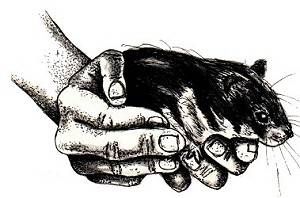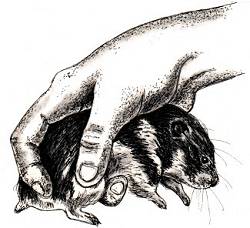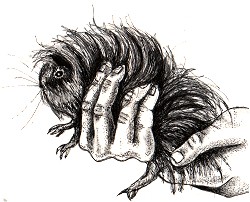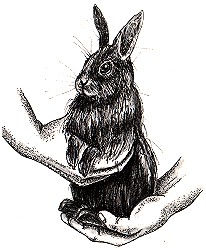Pet Health, Interesting Facts, and Trivia
Small Animal Handling
Courtesy of the Pet Industry Joint Advisory Council
Two-hand hamster method: Gently scoop the
hamster into two hands, and bring your hands
together beneath the hamster's body. The
animal is now fully supported. Slightly cup the
tops of your hands inward over the hamster's
back to make sure it cannot jump out and fall.

One-hand hamster method: This method
should be used only on tame hamsters that are
accustomed to being handled. With your fingers
toward the hamster's rear end, grasp the
hamster securely with your palm along the
animal's back. Your middle fingers should
support its rump on either side of the tail. Lift
gently. You may then transfer the hamster into
the palm of your other hand and stroke it as a
reward.

Guinea pig method: Guinea pigs are larger
than hamsters and require more support to
protect their backs and internal organs. Slide
one hand beneath the guinea pig's belly, hold
your other hand beneath its rear end and lift.

Rabbit method: Most rabbits are larger and
heavier than guinea pigs, so they will require
extra support. Place one hand beneath the
rabbit's chest, just behind the elbows of its
front legs. Slide your other hand beneath its
rump and hind legs. Hold the rabbit gently, but
firmly, as you lift to ensure that it does not
kick out of your grasp. Remember, never lift a
rabbit by its ears. Ears are sensitive hearing
organs, not handles.